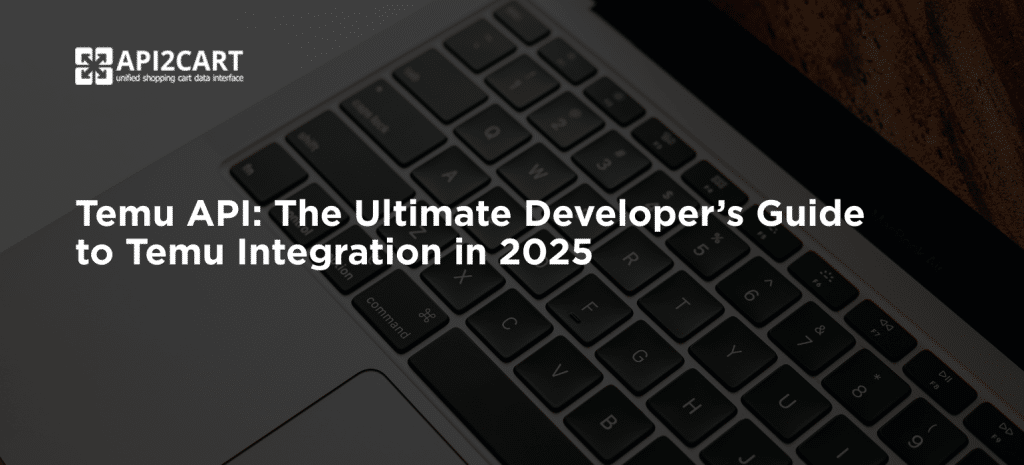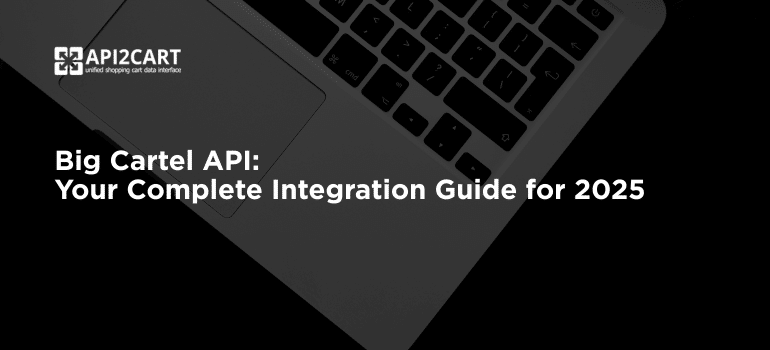
Magento is one of the top shopping platforms that are widely used by merchants all over the world. This eCommerce solution powers over 26% of all online stores worldwide, and the number of merchants using this cart is growing very quickly. Being integrated with Magento API is beneficial for businesses and services of different kinds, as it turns all the 240k+ users into their potential customers.
Integration with Magento requires working with its API (Application Programming Interface), and this article is going to give you an overview of what you will have to deal with if decided on connecting to this cart. For the convenience of developers, Magento API is available in both REST and SOAP. Let’s take a closer look at each option.

Magento Integration via API2Cart
Explore how Magento integration can help your business become more competitive.
Magento REST API
In simple terms, REST API defines a set of functions to which the developers can perform requests and receive responses. It uses the HTTP protocol to perform the data interaction and can be used for basically any programming language.
The API makes it possible for you to manage products, sales orders, inventory, customers, and their addresses. It supports both XML and JSON and works with such four main HTTP methods as GET, POST, PUT, and DELETE. An important concept of REST API architecture is that different HTTP request methods perform different actions when applied to the same URL.
In order to make API calls, you will have to authenticate your identity and have all the necessary permissions to access the API resource. Authentication allows Magento to recognize the caller's user type and define API calls' resource accessibility based on their access rights.
There are two steps that are required if you want to utilize Magento REST API:
1. You need to set up permissions for REST resource operations from Magento Admin Panel.
2. You must configure the attributes for different user types in Magento Admin Panel.
There are 3 various types of users accessing the data:
- Admin as the backend logged in user;
- Customer as the fronted logged in user;
- Guest as a non-logged in fronted user.
Magento SOAP API
Many developers and programmers consider SOAP to be too tricky and thus prefer to work with REST. Nevertheless, let’s briefly overview this type of Magento API. In a few words, it enables you to make calls for work with such resources as categories, products, customers, and sales orders as well as allows you to operate shopping carts and inventory. SOAP is the default protocol of Magento API, but shopping platform also supports XML-RPC as an option.
Here are the basic API methods that can be called from your SOAP or XML-RPC client:
| Method | Description | Return value |
| startSession() | Start the API session and return session ID. | string |
| endSession(sessionId) | End the API session. | boolean |
| login(apiUser, apiKey) | Start the API session, return the session ID, and authorize the API user. | string |
| call(sessionId, resourcePath,array arguments) | Call the API resource that is allowed in the current session. See Note below. | mixed |
| multiCall(sessionId, array calls,array options) | Call the API resource’s methods that are allowed for current session. See Notes below. | array |
| resources(sessionId) | Return a list of available API resources and methods allowed for the current session. | array |
| globalFaults(sessionId) | Return a list of fault messages and their codes that do not depend on any resource. | array |
| resourceFaults(sessionId, resourceName) | Return a list of the specified resource fault messages, if this resource is allowed in the current session. | array |
In order to connect to Magento SOAP or XML-RPC web services you need to load the WSDL (Web Services Description Language) from one of the URLs list below (where “magentohost” is the domain for your Magento host). For SOAP:
- https://magentohost/api/?wsdl
- https://magentohost/api/soap/?wsdl
For XML-RPC:
- https://magentohost/api/xmlrpc
If you want to explore more information about Magento API and how to work with it, visit the documentation provided by the platform.
Bottom Line
To summarize all the above-mentioned, Magento API is a helpful piece of code that enables to get access the data of a particular store and retrieve the information on products, orders, categories, customers, etc. to create robust and useful apps. Ready integration with this shopping platform is indeed great, but there are some difficulties you will face when developing it.
API2Cart is a solution that will help you to avoid much of this unpleasant experience. It is integrated with Magento and allows you to get all the necessary data and perform operations with orders, customers, products, etc. Moreover, Magento is not the only eCommerce platform that service works with. It is integrated with 60+ popular platforms such as Bigcommerce, WooCommerce, Shopify, PrestaShop, etc which means that by integrating once you get a possibility to work with all those top shopping carts with no pain.
Have a look at API2Cart documentation to explore a more detailed information on how it works. Do not hesitate to schedule a FREE consultation if you have any questions regarding the work of the service.
FAQs
How can Magento API help my eCommerce software?
Magento API enables eCommerce software providers to access essential data such as products, orders, customers, and inventory in real time. By using Magento's REST or SOAP API, developers can integrate their systems with the platform, automate various business processes, and improve operational efficiency. For example, software solutions can automatically update stock levels, manage orders, and retrieve customer data across multiple Magento-powered stores. This enhances the functionality and competitiveness of your software.
Why is Magento API integration important for software vendors?
Magento API integration is crucial for software vendors because it unlocks a wealth of opportunities by enabling seamless data synchronization between your software and Magento stores. With over 26% of global eCommerce stores using Magento, integrating with this platform allows your solution to tap into a large and growing market. API2Cart simplifies this integration by providing a unified API that connects to Magento and over 60 other popular platforms, reducing development time and ensuring ongoing compatibility with platform updates.



